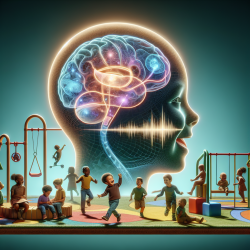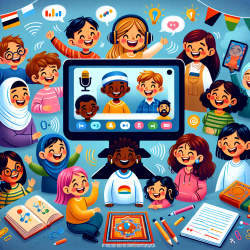Introduction
In the field of speech-language pathology, practitioners are constantly seeking ways to enhance the developmental outcomes of children. A recent research article, "The brain in solitude: an (other) eighth amendment challenge to solitary confinement," sheds light on the profound effects of social interaction and environmental stimulation on brain function. While the study primarily addresses the implications of solitary confinement, its insights are invaluable for those working with children. This blog explores how practitioners can apply these findings to improve their skills and foster better outcomes for children.
The Importance of Social Interaction and Environmental Stimulation
The research underscores the critical role of social interaction and environmental stimulation in maintaining physiological brain function. For children, these elements are not just beneficial but essential. The brain's plasticity during early development means that positive social engagement and enriched environments can lead to significant improvements in cognitive and socio-emotional skills.
Applying Neuroscience Insights in Practice
Practitioners can leverage these insights by incorporating more interactive and stimulating activities into their therapy sessions. Here are some practical strategies:
- Interactive Play: Use games and activities that require children to interact with peers, fostering social skills and emotional intelligence.
- Enriched Environments: Create therapy spaces that are rich in sensory stimuli, including varied textures, colors, and sounds, to engage and stimulate the child's brain.
- Collaborative Learning: Encourage group activities that promote teamwork and communication, essential skills for social development.
Encouraging Further Research
While the current research provides a strong foundation, there is a need for further studies specifically focused on children. Practitioners are encouraged to participate in or support research efforts that explore the impact of social and environmental factors on child development. By contributing to the body of knowledge, practitioners can help refine therapeutic approaches and improve outcomes.
Conclusion
The insights from "The brain in solitude" highlight the transformative power of social interaction and environmental stimulation. By integrating these elements into therapy, practitioners can significantly enhance the developmental trajectories of children. As we continue to learn more about the brain's response to its environment, the potential for creating positive change in children's lives grows exponentially.
To read the original research paper, please follow this link: The brain in solitude: an (other) eighth amendment challenge to solitary confinement.










